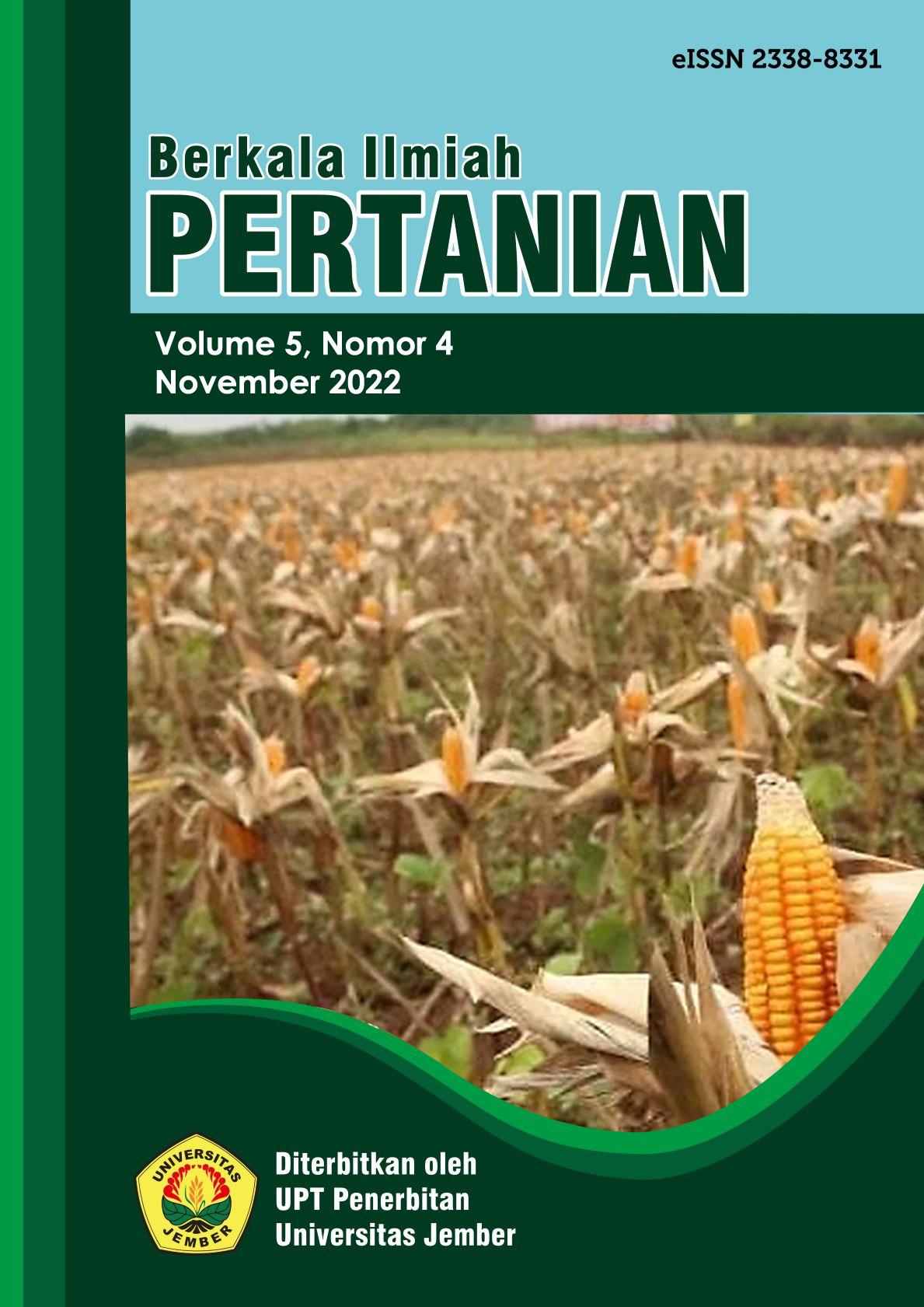Respon Pertumbuhan Dan Hasil Jagung Lokal (Zea Mays L.) Varietas Talango Terhadap Pemberian Selenium (Se)
Response Of The Growth And Production Of Local Maize (Zea Mays L.) Talango Varieties To Selenium (Se)
DOI:
https://doi.org/10.19184/bip.v5i4.35129Abstract
Local maize plants have prospects to be developed in line with the increasing demand and level of community consumption. One of the local varieties of maize, the Talango variety, has the advantages of early maturity of 75 days, long shelf life, high yield of maize and cheap seed prices. The nutritional content of the Talango variety is higher than that of hybrid maize, such as 11.24% protein, 4.96% fat and 75.6% carbohydrates. This study were to determine the best dose of selenium to growth and yield of local maize (Zea mays L.) Talango varieties. This study used Randomized Block Design (RBD) one factor consisting A0 = 0 µm, A1 = 5 µm, A2 = 10 µm, A3 = 15 µm, A4 = 20 µm, A5 = 25 µm, A6 = 30 µm, A7 = 35 µm, A8 = 40 µm, A9 = 45 µm. Each treatment will be repeated 4 times so that there are total 40 experimental units. The research variebles included plant height, root wet weight, shoot wet weight, total wet weight, flowering age, seed weight and 100 seed weight. The data obtained will be analyzed using analysis of variance (ANOVA). The result will be analyzed using Duncan Multiple Range Test (DMRT) level of α 5% to compare the effect between treatments on plant yield. The treatment of selenium (Se) doses at different levels had a positive effect on increasing the observed variables of root fresh weight, shoot fresh weight, total fresh weight, flowering age, seed weight per plant and 100 seed plant weights. The results showed that the Se treatment with doses of 20 μM to 25 μM and 35 μM to 40 μM produced the best seed weight per plant in the range of 59.25 g – 79.84 g which was significantly different from the control and other treatment doses.
Keywords: Local maize, Talango varieties, Selenium
Downloads
Downloads
Published
Issue
Section
License
Authors who publish with this journal agree to the following terms:
1.Authors retain copyright and grant the journal right of first publication with the work simultaneously licensed under a Creative Commons Attribution-NonCommercial 4.0 International License that allows others to share the work with an acknowledgement of the work's authorship and initial publication in this journal.
2.Authors are able to enter into separate, additional contractual arrangements for the non-exclusive distribution of the journal's published version of the work (e.g., post it to an institutional repository or publish it in a book), with an acknowledgement of its initial publication in this journal.
3.Authors are permitted and encouraged to post their work online (e.g., in institutional repositories or on their website) prior to and during the submission process, as it can lead to productive exchanges, as well as earlier and greater citation of published work (See The Effect of Open Access).




















